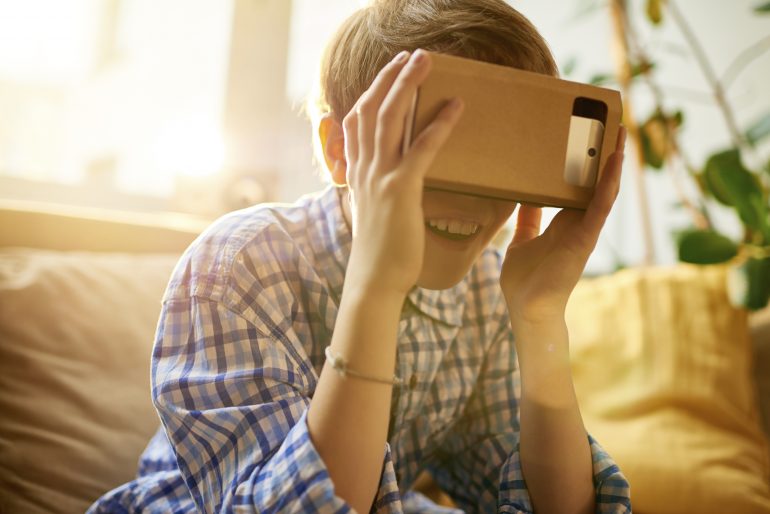It’s definitely been a big year for wearable tech. We’ve seen IPOs (Fitbit), major acquisitions, (Misfit and Fossil, Recon Instruments and Intel) and major launches (Apple Watch, Samsung Gear VR, TAG Heuer Carrera Connected). According to IDC, the wearable market—which includes fitness trackers and smartwatches—will pass 111.1 million shipped devices in 2016, up from 80 million units shipped in 2015. And these numbers continue to climb. By 2019, IDC expects that number to nearly double, with vendors shipping some 214 million wearable devices.
With 2016 fast approaching, I thought it was appropriate for me to take a look back at the wearable tech predictions I made for 2015. In reading them, it was quite clear that I was overly optimistic on many things I had hoped would happen this year. But there were a couple that my crystal ball got right.
Here’s a look back at the 14 predictions I made for the wearable space in 2015 and how they fared over the course of this year.
Prediction 1: Smartphone-powered VR solutions will bring virtual reality mainstream
If there was one category of wearable tech that made a lot of noise this year it was virtual reality. We didn’t see the consumer release of the Oculus Rift nor the official release of any of its direct competitors, such as Sony’s Project Morpheus (now Playstation VR) as we had hoped. Instead, we got a lot of demos, marketing videos, and press announcements. But the good news is that these devices are set to hit consumer faces as early as Q1 of 2016, which is the launch date for the Rift.
Where dedicated virtual reality systems were delayed till next year, this year did see a lot of traction with smartphone-powered VR solutions, just as I expected. Samsung launched the first virtual reality headset for consumers with the consumer edition of the Samsung Gear VR. Along with the device, Samsung and Oculus have worked hard on ramping up a content catalogue for the head-mounted display, including apps from big brands like Netflix and Ustwo, and short films from The New York Times and the creators of The Walking Dead.
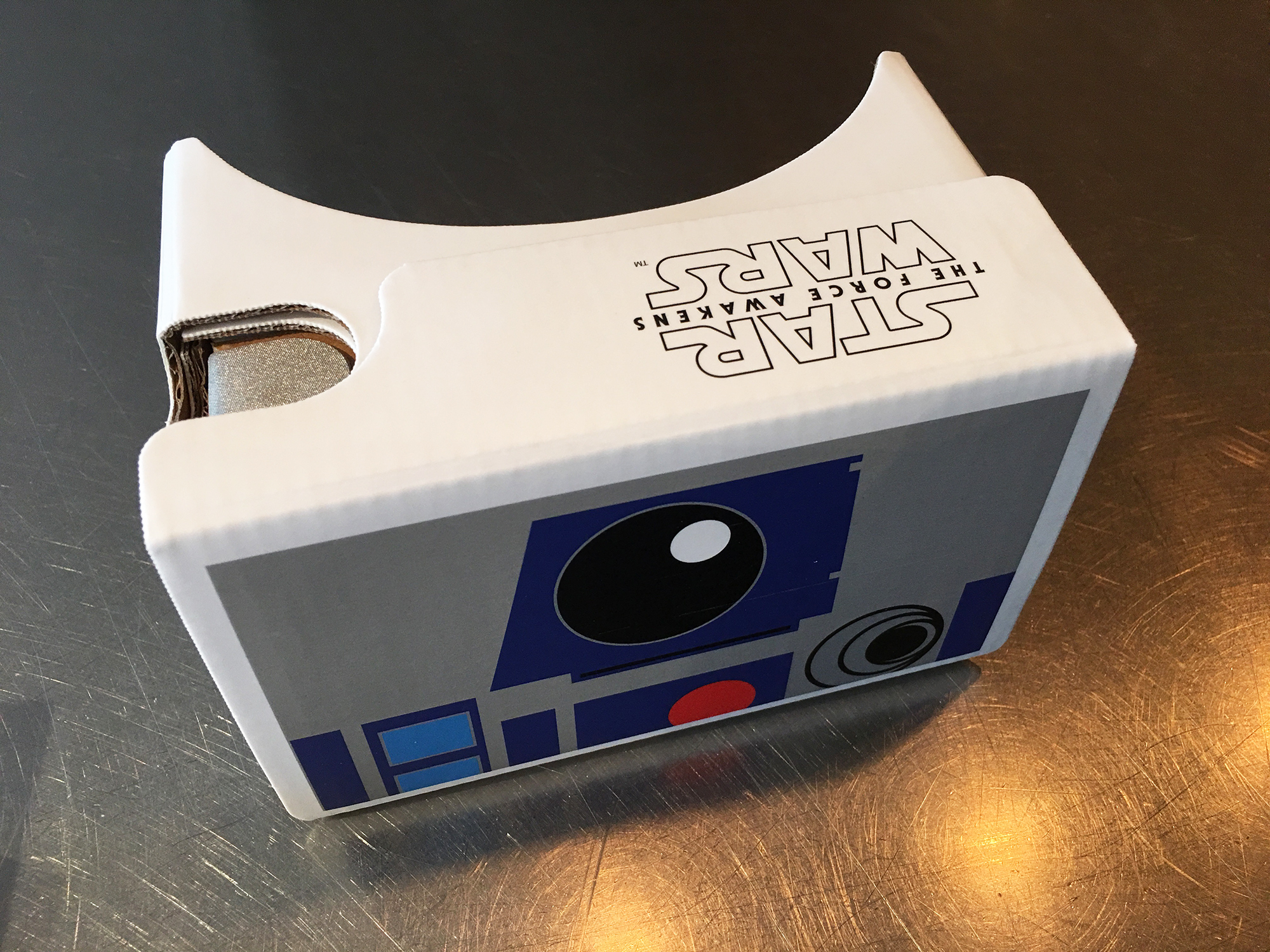
The New York Times made waves in virtual reality this year with its partnership with VR filmmaking powerhouse VRSE to launch the NYT VR app. To mark the launch of its VR app, The New York Times shipped over a million Google Cardboard headsets to its subscribers. Cardboard, which was given out at I/O back in 2014, has become a powerful and extremely accessible virtual reality platform, especially as many of them are being given away for free. Verizon was another big brand we saw jump on the free Cardboard bandwagon this year with the limited release of Star Wars themed Cardboards to its subscribers.
Timed perfectly with the mass distribution of Cardboards to Times subscribers was a huge update to YouTube to support Cardboard content. The update enabled Cardboard users to view any video with the headset even if it wasn’t made for VR, and made it even easier for 360-degree content to be viewed with the tap of a button. The killer combination of Cardboard and 360-degree content, which is also supported by Facebook and Flickr, made some important inroads in the VR space this year, and we are sure to continue to see its impact in 2016.
Analysis firm CCS Insights echoed the importance of smartphone VR in their latest report on the VR space. The firm forecasts that VR device sales will reach 24 million in 2018 with 90% of these sales coming from mobile-powered VR. CCS positions 2015’s sales at approximately 2.5 million.
Prediction 2: Wearable cameras break out of sports and onto the bodies of super sharers
While I may have been on the mark with my VR prediction, I was far too bullish on the proliferation of wearable camera adoption by consumers.
This year did see some new hardware hit the market. iON Cameras, most known for its action cameras, officially debuted its 1.5” SnapCam with support for video and photos, while Narrative, makers of the Narrative Clip, is now shipping its second-generation device also with video support and improved picture quality.
But did we start to see celebrities stream their lives from wearable cameras this year? Nope. Not yet. I still stand by this prediction but definitely see it as a couple of years out. Mark my words, we will all be wearing cameras at some point – especially as we begin to use photos from these devices to analyze our behaviour, including food logging, and enjoy documenting our lives without continually disrupting it like we do now. In fact, according to a report from Tractica published this year, wearable camera shipments are expected to increase from 5.6 million in 2014 to 30.6 million units annually by 2020, representing a compound annual growth rate (CAGR) of 33%.
We might not be walking around with body-worn cameras quite yet, but one group that started to this year was the police. The Toronto Police began its pilot of body-worn cameras which includes 100 officers testing these devices for a full year in various parts of the city. And in the USA, the Justice Department awarded over $23 million in funding for body-worn camera pilot programs in 32 states.
As part of this prediction, I flagged the growth of 360-degree cameras, which I said will see success first with the professionals before “catch[ing] on the same way panorama did with the average user.” This year did offer up some new tools for professionals, including the $60K Ozo camera from Nokia and the Jump rig from GoPro and Google. And it was clear from the number of VR campaigns, from Star Wars to the White House, that big brands jumped on the 360 train. And although 360 photos and videos did not spread like wildfire for consumers in 2015, affordable 360 cameras like those from Ricoh (Theta) and Giroptic, apps like Google’s Cardboard Camera and updates to YouTube and Facebook to support this content are positioning 2016 for this to happen.
Prediction 3: Identity becomes the killer app for wrist-worn wearables
Last year I pegged two use cases as potential “killer apps” for smartwatches and other wrist-worn wearables: payments and identity. Both of these really haven’t come into their own but there was some significant movement, especially on the payments side of things.
This year saw the launch of Apple Pay on the Apple Watch, which according to Wristly, is one of the most popular features of the device. Wristly found that 80% of Apple Watch users who responded to its survey claimed they had used Apple Pay on the watch at least once. And over 51% of respondents described Apple Pay on Apple Watch as “magical” with 79% preferring to use the digital payments system on the watch over the iPhone.
In the UK, Barclay launched its bPay wearable payment system, which includes a wristband. In Canada, Nymi piloted the use of its heartbeat authentication bracelet in two payment pilots – one with RBC and the other with TD, both of which were powered by MasterCard. And Swatch and Visa joined forces to launch an NFC payments watch, Bellamy, first in China before launching in the US, Brazil and Switzerland next year.
But this is all just the beginning. Tractica forecasts that wearable payment transaction volume will grow from $3.1 billion in 2015 to $501.1 billion worldwide by 2020, by which time wearable payments will represent approximately 20% of the total mobile proximity transaction volume and about 1% of total cashless transactions in retail.
Outside of Google Authenticator and 1Password launching apps on smartwatches to make their existing services more convenient to users, there really wasn’t much disruption on consumer authentication with wearable tech. Where we did see some traction was in the enterprise. Nymi (formally Bionym) kicked off the year with a major organizational shift to re-focus its efforts on authentication solutions in the enterprise. In October, Nymi and Entertech Systems announced the formation of a new partnership focused on both physical and logical systems in the enterprise which combined Entertech’s identity platform, BioConnect with Nymi’s secure and continuous wearable authentication device.
Prediction 4: Apple will succeed with the Apple Watch, because Apple
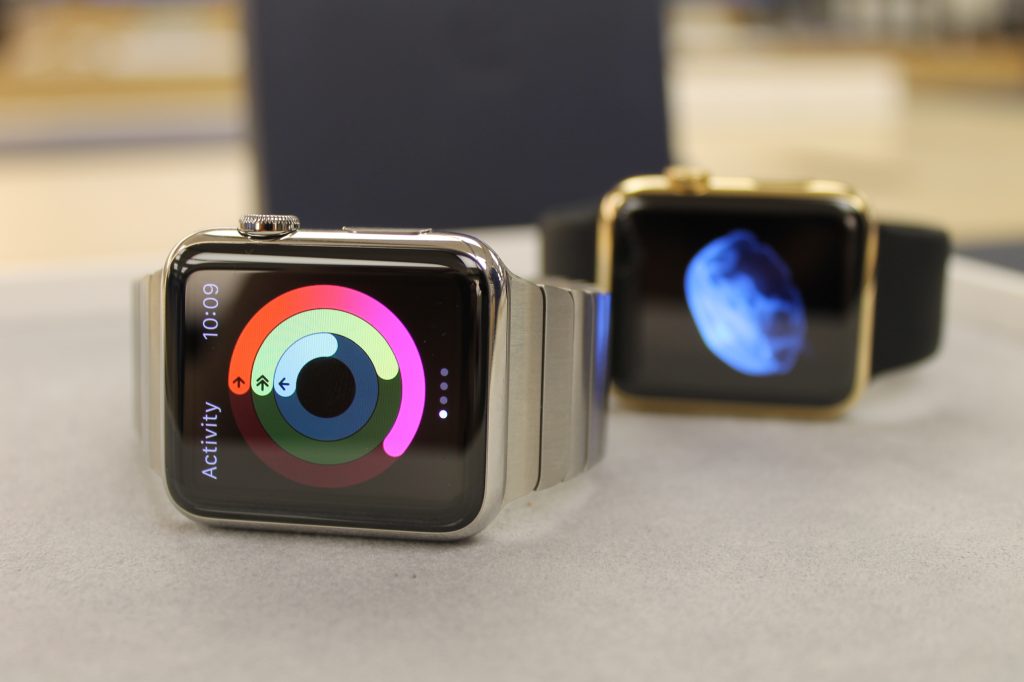
Apple launched its first wearable, the much anticipated Apple Watch, in June of this year. But was the Apple Watch a success? If we judge solely based on numbers the answer is yes – at least, that is what the analysts believe, since Apple hasn’t actually reported actual numbers. IDC’s latest report from Q3 of 2015 saw Apple eating up 61.3% of the smartwatch market share, with Android Wear its closest competition at 15.2%. IDC expects that Apple will hold on to this top spot through to 2019, where they forecast Apple to ship 45.2 million Apple Watches at a 51.1% share of the market. But there continues to be much debate on whether Apple really succeeded with its wearable tech after looking at the value and necessity of the device and comparing it to the launch of other Apple products.
One thing the Apple Watch did quite well was put the pressure on other smartwatch and traditional Swiss watch makers to up their game – especially as the Apple Watch was the first to market itself as a fashion accessory, with a wide variety of styles and straps and a high end luxury tier. NDP reported that this year traditional watch sales saw a 14% decline, the largest drop since 2008, and attributed some of this decline to the launch of the Apple Watch. In an effort to gain back this market share, big watch brands like Fossil, Swatch and TAG joined in on the smartwatch party.
Prediction 5: Apple’s Digital Touch Will Usher in a New Form of Communication
I was extremely bullish on what I see as an impending communication revolution ushered in by wearable tech. It did not happen this year and I don’t expect it to really happen next year, either. But it will happen. As the wearable space matures and adoption increases, we will see a new non-verbal communication emerge in the use of haptic feedback and possibly LEDs. I am still a believer that the new screen is no screen.
I thought that Apple Watch’s Digital Touch would make this happen. This was me last year:
“Apple’s tapped into one of the more powerful opportunities wearable tech offers: the ability to further evolve communication… I expect Digital Touch to be a competitive advantage for the Apple Watch for a short time until other smartwatch and wearable companies begin to adopt similar features. I can also see Apple’s Digital Touch features influencing the messaging app space on mobile.”
This hasn’t happened yet, and I’m not sure in its current form it will. In fact, a report from Wristly found that nearly 60% of Apple Watch wearers on its panel use heartbeats, taps, and sketches less than expected – with a lack of friends wearing the watch and a less than desirable user experience cited as holding the feature back. Haptics on wearables, including the Apple Watch, are severely under-utilized. Since the release of watchOS 2, which finally gave app developer access to the sensors on Apple Watch, I can count on my hand the number of apps that are taking advantage of this in a meaningful way.
The emergence of this form of communication may also be held back because we have not yet figured out a common design language for sensory messages, as pointed out by Chris Ullrich, VP of UX at Immersion, a leader in haptics since 1993, in a great article for Fast Company.
While haptics may not be flourishing as a new language, it did see some traction in the VR space to help put your body in the virtual world. Oculus unveiled its Oculus Touch Controllers this year, which will use haptic feedback to make you feel like you are touching something. Gloveone (which raised over $150,000 on Kickstarter) and Hands Omni by Virtuix (makers of the Omni VR treadmill) are also leveraging haptic feedback to take the VR experience to the next level.
Prediction 6: Fashion brands will dominate tech headlines
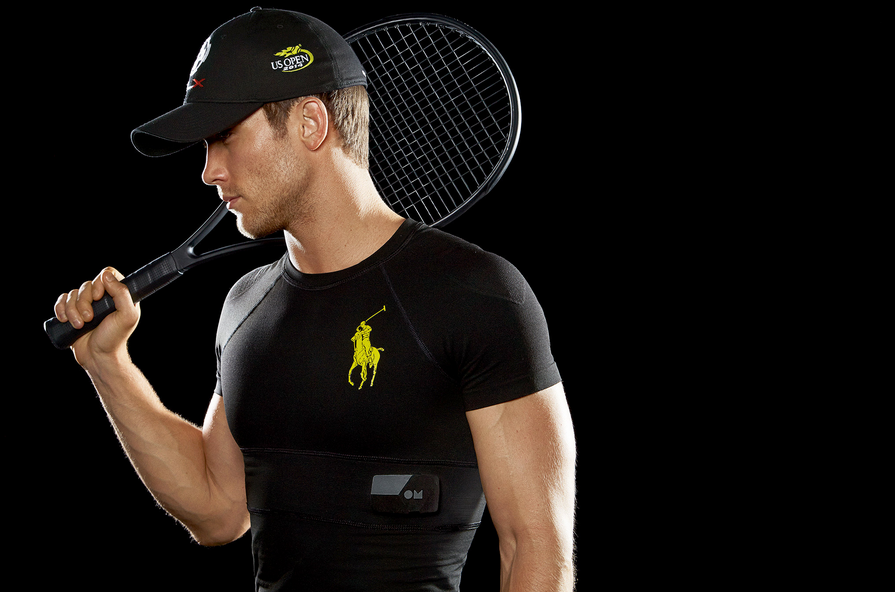
This is one prediction I got right and happily so, because the wearable tech space definitely needed an injection of ‘wearable’ after a couple of years emphasizing the ‘tech’. While in late 2014 we started to see some fashion brands alongside wearable tech headlines, such as Tory Burch, Diesel, and Opening Ceremony, 2015 took this to a whole new level.
In August, Ralph Lauren and Montreal-based OMsignal partnered up to launch a sensor-filled smart polo, the PoloTech Shirt, which can be purchased on Ralph Lauren’s website and in stores such as its flagship on 5th Avenue in New York. Connected clothing continued to make fashion headlines at New York Fashion Week this year, where Chromat’s smart sports bra, Aeros, and Adrenaline dress debuted along with a Zac Posen-Google collaboration LED dress, the first to walk the NYFW runway.
But beyond the rack, perhaps one of the biggest announcements in wearable tech fashion came from Google, which surprised us at I/O with its foray into smart textiles, Project Jacquard. Jacquard is a set of tools to equip fashion designers with what they need to bring interactivity, including touch and gesture, to their designs at scale. Google announced that Levi’s will be first to use its smart textiles, but we have yet to see what shape this official partnership will take.
But smart clothing wasn’t the only category getting a makeover. On the wrist, TAG Heuer quickly sold out of its high-end Carrera Connected smartwatch at $1500 a pop. Fossil launched its Fossil Q Founder smartwatch. And in the UK, Topshop teamed up with Barclaycard’s bPay system to offer a line of fashionable accessories you can pay for things with.
Fashion brands also embraced virtual reality this year. Tommy Hilfiger began using virtual reality in stores this October to let shoppers watch the brand’s fall runway presentation as if they were sitting front row at Manhattan’s Park Avenue Armory. Rebecca Minkoff was one of the first fashion brands to capitalize on VR, filming her runway show for VR so it could then be viewed on Cardboard. And YouVisit, a provider of virtual reality technology, streamed Mercedes Benz Fashion Week events from Russia in VR.
Prediction 7: A new wearable sensor will democratize the “lie detector”
We really didn’t see a lot of interesting things happen on the sensor side of things this year in consumer products. For the most part, the space continued to strengthen its use of motion detection and heart rate monitoring, and I would dare say that even in these areas there wasn’t an abundance of innovation across the board. As we are still getting used to quantifying our physical state, we have not yet really moved into the quantification of our emotions as I had hoped.
Although GSR and emotional measurement weren’t breakout hits in 2015, there are a couple of visionary startups who are using sensor data to uncover insights beyond how many steps we have taken in a day. One of these companies is Lightwave. Lightwave’s bioanalytics platform made waves this year at Wimbledon in a campaign with Jaguar called “Feel Wimbledon” which used biometrics to let folks at home “feel” the excitement of the matches. The company leveraged sensor data from wearables and other data points to measure the sentiment of the game.
With devices equipped with GSR in the market, such as Microsoft Band and Jawbone UP3, and others like Magniware focusing on HRV, this year may not have been the year we started to see our emotional selves reflected in the data, but the potential for this to happen is still there.
Prediction 8: Smart garments gain traction at the gym
2015 definitely saw the needle move with smart clothing. Athos launched its smart shirt and shorts. OMsignal partnered with Ralph Lauren. And Hexoskin’s smart clothing for men and women went on sale at Best Buy. But this wasn’t the year that we saw people trade in their typical gym shorts for sensor-filled ones and according to analyst reports, it is going to be a few years before this actually happens.
According to a new report by Juniper released in November of this year, the fitness wearables sector is expected to generate over $10 billion in hardware revenue by 2020, up from an estimated $3.3 billion this year. But this tripling will largely be driven by wrist-worn devices. Juniper does say that “hundreds of thousands” of connected garments will contribute to this growth, but instead of consumers leading the charge it will be professional sports teams kicking off the action.
Catapult and Zebra are two leaders in this space, equipping athletes with sensors that assist coaches in training. These same devices are changing the way that fans experience the game by providing them with new stats on the plays and players in action. This year the NFL equipped all of its players with Zebra’s real-time RFID tracking system by embedding this tracking technology into the shoulder pads of the player’s uniform. Viewers at home were able to access this data in the redesigned NFL 2015 app for Xbox One and Windows 10.
Prediction 9: Google Glass rises from the ashes in enterprise (and travel)
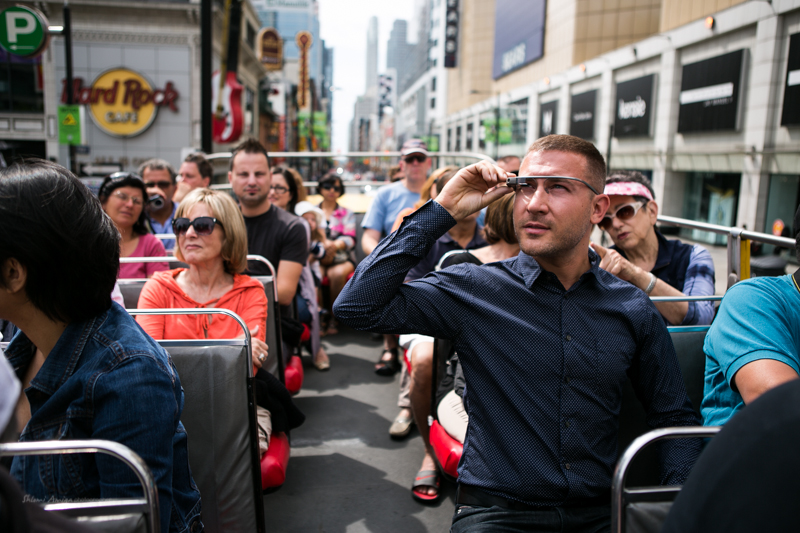
Google Glass will go down in history as the wearable that took the most heat in this space. After a tumultuous 2014, Google shut down the Explorer program of Glass at the top of this year. Although the shutdown caused tons of “Glass is dead” headlines, Google (now Alphabet) confirmed that it is still working on the device, “graduating” it from Google X and moving it under an independent division led by Nest’s Tony Fadell. In addition, the Glass at Work program would also continue.
Various reports over the course of the year contained rumours that Glass was to reemerge as enterprise hardware. The new device would see improvements aimed at increasing its use in the workplace, including better battery life, improved wireless connectivity, a new Intel Atom processor, and the ability to fold the glasses. The device is expected to be distributed through Google’s Glass at Work program only and according to 9to5 Google, various startups in this program already have the device. This week, FCC images leaked of the new Glass device, but the company has yet to make any official announcements.
One Glass at Work partner proving Glass’ value in the enterprise is APX Labs. The startup has developed Skylight, a platform which allows businesses to leverage the hands-free capabilities of smart glasses to improve their workflow. This year APX Labs raised $13 million in a Series B round of funding, bringing its total raised to $29 million. Fellow Glass at Work startup Augmedix also announced funding news this year, with a $16 million Series A for its Glass software that makes the device a must-have for doctors.
But did Glass come back as a traveler’s tool as I had hoped? Nope. In fact, this year we hardly saw Glass on people’s faces outside of enterprise and healthcare, including the Explorers who initially championed the device.
Prediction 10: Healthcare and sports will see significant disruption from wearables (but the average consumer will still be buried in data)
I predicted that we would see the major leagues make announcements regarding using wearables to better team and fan experience and I was right. I’ve already highlighted a couple of examples on the sports-wearables front, including the NFL’s rollout of Zebra sensors to all players and the use of Lightwave’s platform to quantify the sentiment at Wimbledon.
Two additional areas we saw wearables make a major impact in sports were in concussion measurement and virtual reality. This year, the NHL signed up with Seattle-based X2 Biosystems to outfit all 30 teams with the companies Integrated Concussion Evaluation (ICE) system to measure concussions in real-time. This system is already in use by the NFL, MLS, Premiership Rugby and the US Army. A handful of NFL teams, including the Cowboys and 49ers, are using STRIVR Labs virtual reality system to train their quarterbacks. VR was also used to further the fan experience, with the very first NBA game live-streamed on the Gear VR. The NBA partnered with Turner Sports and NextVR to live-stream the Warriors-Pelicans game in VR for Samsung’s device.

In healthcare, we saw a keener focus on regulatory involvement in the wearable space. This included the FDA unveiling its “draft guidance” for low-risk medical devices, which outlined that the agency won’t regulate “general wellness” devices as long as they are not harmful and encourage healthy habits. Meanwhile, we saw wearables meant specifically for use by the doctor for patients, such as Google X’s smartwatch, begin to emerge – these devices will require the FDA’s stamp of approval before use.
As I expected, we also saw more insurance companies tap into fitness data this year, including John Hancock, which rolled out a program giving its policyholders free fitness bands to track their health progress in return for rebates on their life insurance premiums.
Prediction 11: Developers enter the wearable space, but like in mobile, struggle to make money
While 2014 was a big year for wearable hardware, I had hoped that 2015 would start to see developers embrace some of the platforms that had emerged to do what they do best: add value for these devices. But we have yet to see an app boom in the wearable space in the same way we have with the smartphone.
We did see some app developers and content creators rally around the smartwatch and virtual reality platforms. Pebble and Android Wear continued to grow their app catalogues. But most of the developer focus this year went to getting an app on Apple Watch, with more than 10,000 apps now available to download for the device that isn’t even a year old yet. As many of these apps are extensions of mobile applications, we haven’t seen new revenue models emerge for developers for the smartwatch.
Game developers seem to have been able to raise the price of their games in virtual reality, but this may be in proportion to the development cost. According to an analysis of the Oculus store by Upload VR, more than 20% of the games on Samsung Gear VR are priced at $10 or more, with Anshar Wars 2 and DRIFT charging $15 to download.

Where wearable software did find success this year was in the enterprise. I’ve noted some major funding stories from the likes of Augmedix and APX Labs earlier in this post. Vancouver-based Vandrico is another great example of a company building software solutions for wearables. In November of this year, Vandrico announced its collaboration with SAP Co-Innovation Labs and Illumiti to launch a solution for miners that utilizes its Canary platform. Vandrico’s Canary Platform, a wearable and IoT communications system designed specifically for enterprise security and scale, is also being piloted at Whistler Blackcomb to keep tourists safe and moving along the hills in an efficient manner.
Prediction 12: Most marketers and advertisers will lump wearables in with their mobile strategy
This prediction is hard to measure, but if the initial apps launched for Apple Watch is any indication as to the thinking around wearables, it is safe to say that most companies are still thinking mobile in a wearable world. Most of the apps are notification driven and attempt to utilize the wearable as another screen despite how small it is and the sensors that are available.
There were some stand out campaigns that went against the grain, however, showing some truly innovative thinking with this new technology. One great example was a concept video from Austin, Texas agency T3, which re-imagined the Tinder app on Apple Watch to automatically swipe right based on your heart rate. Another great example was Mondelez’s Trident brand, which partnered with Strap in its first promotion built around fitness trackers. The gum brand’s C.H.E.W. campaign (Change Health Every Week) saw Fitbit, Jawbone, Google Fit and Health Kit users connect their fitness to the Kum & Go application to complete particular fitness goals in return for deals on products. And of course, I have already mentioned the Jaguar campaign from Mindshare UK in partnership with Lightwave earlier in this post.
Prediction 13: Fears around privacy and security will continue to grow (for wearables and in general)
At the time I wrote these predictions we were still coming down from Sony’s “The Interview” hack and it was easy to see that as more and more people began to adopt wearables that this was going to continue to be a hot topic. Fears over privacy are not new, but as this new technology, rooted in big data, continues to make its way onto our bodies and homes it will put our concerns on overdrive.
This year we saw the Chinese Army ban wearables, smartwatches especially, claiming that the use of wearables that can access the internet, locate information, and perform voice calling is a violation to national security. In addition, HP published a security study for smartwatches that found that all 10 of the smartwatches it tested exhibited security flaws and are vulnerable for attack. Among the flaws noted in the report were insufficient user authentication, lack of transport encryption, and concerns regarding the protection of firmware. The report continued to provide a series of actionable recommendations for use of these devices at home and at work. And in October, a story broke about the theoretical ability to hack a Fitbit in just 10 seconds to infect it with malware. The story was later commented on by Fitbit claiming that the security issues raised were false, but many were left with questions.
Prediction 14: The promise of wearables will continue to blur with reality
Our desire to live in the future today continued as the new norm in the media, especially with this year being the year that Marty McFly traveled Back to the Future (which just exacerbated it all). But after Gartner published its Hype Cycle for 2015 placing wearables in the “trough of disillusionment”, I think it helped set the tone to really focus on what these devices can actually do for users. You can see this reflected in a lot of reviews of the devices launched this year, including the intense criticism that Apple Watch continues to get for not delivering enough value. This fantastic piece by Scott Stein at CNET on “Why the year of the smartwatch finished with a whimper” is a great example of how just launching a wearable is no longer enough.
So where does all this leave us in the new year? Stay tuned for my follow-up 2016 wearable predictions!

